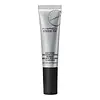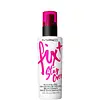What's inside
What's inside
 Key Ingredients
Key Ingredients

 Benefits
Benefits

 Concerns
Concerns

 Ingredients Side-by-side
Ingredients Side-by-side

Water
Skin ConditioningDimethicone
EmollientMethyl Trimethicone
Skin ConditioningVinyl Dimethicone/Methicone Silsesquioxane Crosspolymer
Dimethicone/Vinyl Dimethicone Crosspolymer
Skin ConditioningButylene Glycol
HumectantHamamelis Virginiana Water
AstringentCI 77220
Cosmetic ColorantIsononyl Isononanoate
EmollientAmmonium Acryloyldimethyltaurate/Vp Copolymer
Salix Nigra Bark Extract
Skin ProtectingLactobionic Acid
BufferingTocopheryl Acetate
AntioxidantSodium Hyaluronate
HumectantLaminaria Saccharina Extract
Skin ProtectingEcklonia Cava Extract
Skin ConditioningButyl Avocadate
Skin ConditioningPolyglyceryl-3 Disiloxane Dimethicone
Skin ConditioningPolyglyceryl-3 Polydimethylsiloxyethyl Dimethicone
Skin ConditioningEthylhexylglycerin
Skin ConditioningIsohexadecane
EmollientHydrolyzed Soy Protein
HumectantAcetyl Glucosamine
Skin ConditioningZinc PCA
HumectantPropanediol
SolventSodium Chloride
MaskingAcrylamide/Sodium Acryloyldimethyltaurate Copolymer
Emulsion StabilisingSynthetic Fluorphlogopite
Hydroxyapatite
AbrasiveSilica
AbrasiveNylon-12
Polysorbate 80
EmulsifyingLauryl Methacrylate/Glycol Dimethacrylate Crosspolymer
Coconut Acid
CleansingSalicylic Acid
MaskingParfum
MaskingBHT
AntioxidantTocopherol
AntioxidantPhenoxyethanol
PreservativeBenzoic Acid
MaskingZinc Oxide
Cosmetic ColorantWater, Dimethicone, Methyl Trimethicone, Vinyl Dimethicone/Methicone Silsesquioxane Crosspolymer, Dimethicone/Vinyl Dimethicone Crosspolymer, Butylene Glycol, Hamamelis Virginiana Water, CI 77220, Isononyl Isononanoate, Ammonium Acryloyldimethyltaurate/Vp Copolymer, Salix Nigra Bark Extract, Lactobionic Acid, Tocopheryl Acetate, Sodium Hyaluronate, Laminaria Saccharina Extract, Ecklonia Cava Extract, Butyl Avocadate, Polyglyceryl-3 Disiloxane Dimethicone, Polyglyceryl-3 Polydimethylsiloxyethyl Dimethicone, Ethylhexylglycerin, Isohexadecane, Hydrolyzed Soy Protein, Acetyl Glucosamine, Zinc PCA, Propanediol, Sodium Chloride, Acrylamide/Sodium Acryloyldimethyltaurate Copolymer, Synthetic Fluorphlogopite, Hydroxyapatite, Silica, Nylon-12, Polysorbate 80, Lauryl Methacrylate/Glycol Dimethacrylate Crosspolymer, Coconut Acid, Salicylic Acid, Parfum, BHT, Tocopherol, Phenoxyethanol, Benzoic Acid, Zinc Oxide
Water
Skin ConditioningC9-12 Alkane
SolventGlycerin
HumectantButylene Glycol
HumectantPvp
Emulsion StabilisingCucumis Sativus Fruit Extract
EmollientCamellia Sinensis Leaf Extract
AntimicrobialChamomilla Recutita Extract
Skin ConditioningTocopheryl Acetate
AntioxidantCaffeine
Skin ConditioningIsononyl Isononanoate
EmollientPPG-26-Buteth-26
Skin ConditioningPanthenol
Skin ConditioningArginine
MaskingTrimethylsiloxysilicate
EmollientPEG-40 Hydrogenated Castor Oil
EmulsifyingPolydextrose
HumectantHydrogenated Lecithin
EmulsifyingCitric Acid
BufferingParfum
MaskingBHT
AntioxidantDisodium EDTA
Chlorphenesin
AntimicrobialPhenoxyethanol
PreservativeWater, C9-12 Alkane, Glycerin, Butylene Glycol, Pvp, Cucumis Sativus Fruit Extract, Camellia Sinensis Leaf Extract, Chamomilla Recutita Extract, Tocopheryl Acetate, Caffeine, Isononyl Isononanoate, PPG-26-Buteth-26, Panthenol, Arginine, Trimethylsiloxysilicate, PEG-40 Hydrogenated Castor Oil, Polydextrose, Hydrogenated Lecithin, Citric Acid, Parfum, BHT, Disodium EDTA, Chlorphenesin, Phenoxyethanol
 Reviews
Reviews

Ingredients Explained
These ingredients are found in both products.
Ingredients higher up in an ingredient list are typically present in a larger amount.
BHT is a synthetic antioxidant and preservative.
As an antioxidant, it helps your body fight off free-radicals. Free-radicals are molecules that may damage your skin cells.
As a preservative, it is used to stabilize products and prevent them from degrading. Specifically, BHT prevents degradation from oxidation.
The concerns related to BHT come from oral studies; this ingredient is currently allowed for use by both the FDA and EU.
However, it was recently restricted for use in the UK as of April 2024.
Learn more about BHTButylene Glycol (or BG) is used within cosmetic products for a few different reasons:
Overall, Butylene Glycol is a safe and well-rounded ingredient that works well with other ingredients.
Though this ingredient works well with most skin types, some people with sensitive skin may experience a reaction such as allergic rashes, closed comedones, or itchiness.
Learn more about Butylene GlycolIsononyl Isononanoate is a synthetic skin-conditioner and texture enhancer. It is created from nonanoic acid, a fatty acid found in cocoa and lavender oil.
As an emollient, Isononyl Isononanoate helps keep your skin soft and smooth. This is because emollients create a barrier on the skin to trap moisture in.
Isononyl Isononanoate helps give products a velvet feel and improves spreadability.
Learn more about Isononyl IsononanoateParfum is a catch-all term for an ingredient or more that is used to give a scent to products.
Also called "fragrance", this ingredient can be a blend of hundreds of chemicals or plant oils. This means every product with "fragrance" or "parfum" in the ingredients list is a different mixture.
For instance, Habanolide is a proprietary trade name for a specific aroma chemical. When used as a fragrance ingredient in cosmetics, most aroma chemicals fall under the broad labeling category of “FRAGRANCE” or “PARFUM” according to EU and US regulations.
The term 'parfum' or 'fragrance' is not regulated in many countries. In many cases, it is up to the brand to define this term.
For instance, many brands choose to label themselves as "fragrance-free" because they are not using synthetic fragrances. However, their products may still contain ingredients such as essential oils that are considered a fragrance by INCI standards.
One example is Calendula flower extract. Calendula is an essential oil that still imparts a scent or 'fragrance'.
Depending on the blend, the ingredients in the mixture can cause allergies and sensitivities on the skin. Some ingredients that are known EU allergens include linalool and citronellol.
Parfum can also be used to mask or cover an unpleasant scent.
The bottom line is: not all fragrances/parfum/ingredients are created equally. If you are worried about fragrances, we recommend taking a closer look at an ingredient. And of course, we always recommend speaking with a professional.
Learn more about ParfumPhenoxyethanol is a preservative that has germicide, antimicrobial, and aromatic properties. Studies show that phenoxyethanol can prevent microbial growth. By itself, it has a scent that is similar to that of a rose.
It's often used in formulations along with Caprylyl Glycol to preserve the shelf life of products.
Tocopheryl Acetate is AKA Vitamin E. It is an antioxidant and protects your skin from free radicals. Free radicals damage the skin by breaking down collagen.
One study found using Tocopheryl Acetate with Vitamin C decreased the number of sunburned cells.
Tocopheryl Acetate is commonly found in both skincare and dietary supplements.
Learn more about Tocopheryl AcetateWater. It's the most common cosmetic ingredient of all. You'll usually see it at the top of ingredient lists, meaning that it makes up the largest part of the product.
So why is it so popular? Water most often acts as a solvent - this means that it helps dissolve other ingredients into the formulation.
You'll also recognize water as that liquid we all need to stay alive. If you see this, drink a glass of water. Stay hydrated!
Learn more about Water